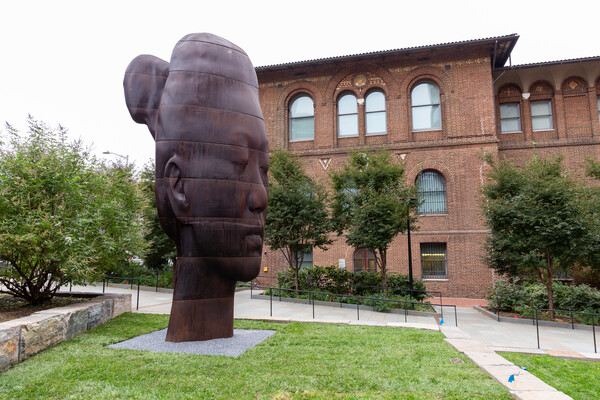
(From left) Doctoral student Hannah Yamagata, research assistant professor Kushol Gupta, and postdoctoral fellow Marshall Padilla holding 3D-printed models of nanoparticles.
(Image: Bella Ciervo)

A new study published in The Astrophysical Journal Supplement Series details the design and validation of the Large Aperture Telescope Receiver (LATR), the cryogenic camera that will be the “heart” of the Simons Observatory Large Aperture Telescope. Led by Ningfeng Zhu, a Ph.D. candidate working in the lab of Mark Devlin, this paper describes the optimization, construction, and performance of the camera, an essential step towards the final tests and integrations that will allow the LATR to be installed at the observatory in Chile in 2022.
The Simons Observatory will be comprised of a series of ground-based telescopes located on Cerro Toco in northern Chile. Here, researchers will study cosmic microwave background (CMB), the residual radiation left behind by the Big Bang, to understand more about the evolution of the universe. Coupled with the largest of these telescopes will be the LATR, an instrument that, once completed, will be the largest cryogenic millimeter-wave camera to date and able to map the sky four times faster than the current generation of instruments.
In order to detect CMB, the detectors inside the LATR, which will accommodate 13 optics tubes that have a total of 62,000 detectors, must be kept incredibly cold, down to 0.1 degrees Kelvin, nearly -459.49 degrees Fahrenheit. The LATR must also be able to cool from room temperature to these incredibly low and precise temperatures very quickly.
Zhu, who help build cryogenic cameras for a cosmology project while an undergraduate at the University of Chicago, used his previous expertise as he led the overall design of the cryostat. “When I moved here, the Simons Observatory was just starting to get off the ground, and they were looking for people to design this next-generation camera,” Zhu says. “It’s a lot of engineering and technical challenges, but in the end we’re after the science.”
These engineering and technical challenges include the need to verify that all of the components perform to required technical specifications, which range from maintaining stable temperatures, from 80 Kelvin all the way down to 0.1 Kelvin, maintaining optical alignment, limiting temperature gradients, and minimizing the time it takes to move between temperatures. All of this requires careful design considerations which take into account a variety of inputs, such as the materials being used and the overall size of the LATR.
In this paper, the researchers detail these design considerations and how they struck a balance to achieve the technical specifications required for the LATR. The paper also details the results of essential validation tests that confirmed that the instrument worked as predicted, a key step in being able to install LATR for on-site testing at the observatory.
“The testing is still ongoing. We will receive more detectors to test, more components to integrate, and we will be gearing towards getting ready for shipment,” Zhu says. After the LATR is installed in Chile, he says, there will be a series of engineering runs and then, if it passes all the tests, the large telescope will be fully operational. While the original project timelines were delayed due to COVID, the team hopes to be ready to ship the LATR by early 2022.
The designs detailed in this paper not only allow for future improvements at the Simons Observatory but can also be used to help researchers in other fields, such as quantum computing, that also require instruments that can work at ultra-low temperatures.
This work was all a massive team effort, Zhu says, and he is excited for the science that will be possible once the telescope is up and running. “We’ll have a level of accuracy that's never been done before, and with this amount of accuracy there's a lot of science to be done,” says Zhu.
This project is supported by the Simons Foundation and the Heising-Simons Foundation with additional support provided by the Dean’s Office of the School of Arts and Sciences. A complete list of collaborating institutions can be found at the Simons Observatory website.
Mark Devlin is the Reese W. Flower Professor of Astronomy and Astrophysics in the Department of Physics and Astronomy in the School of Arts & Sciences at the University of Pennsylvania.
Ningfeng Zhu is a Ph.D. candidate in the Department of Physics and Astronomy in Penn’s School of Arts & Sciences.
Erica K. Brockmeier

(From left) Doctoral student Hannah Yamagata, research assistant professor Kushol Gupta, and postdoctoral fellow Marshall Padilla holding 3D-printed models of nanoparticles.
(Image: Bella Ciervo)

Jin Liu, Penn’s newest economics faculty member, specializes in international trade.
nocred

nocred

nocred